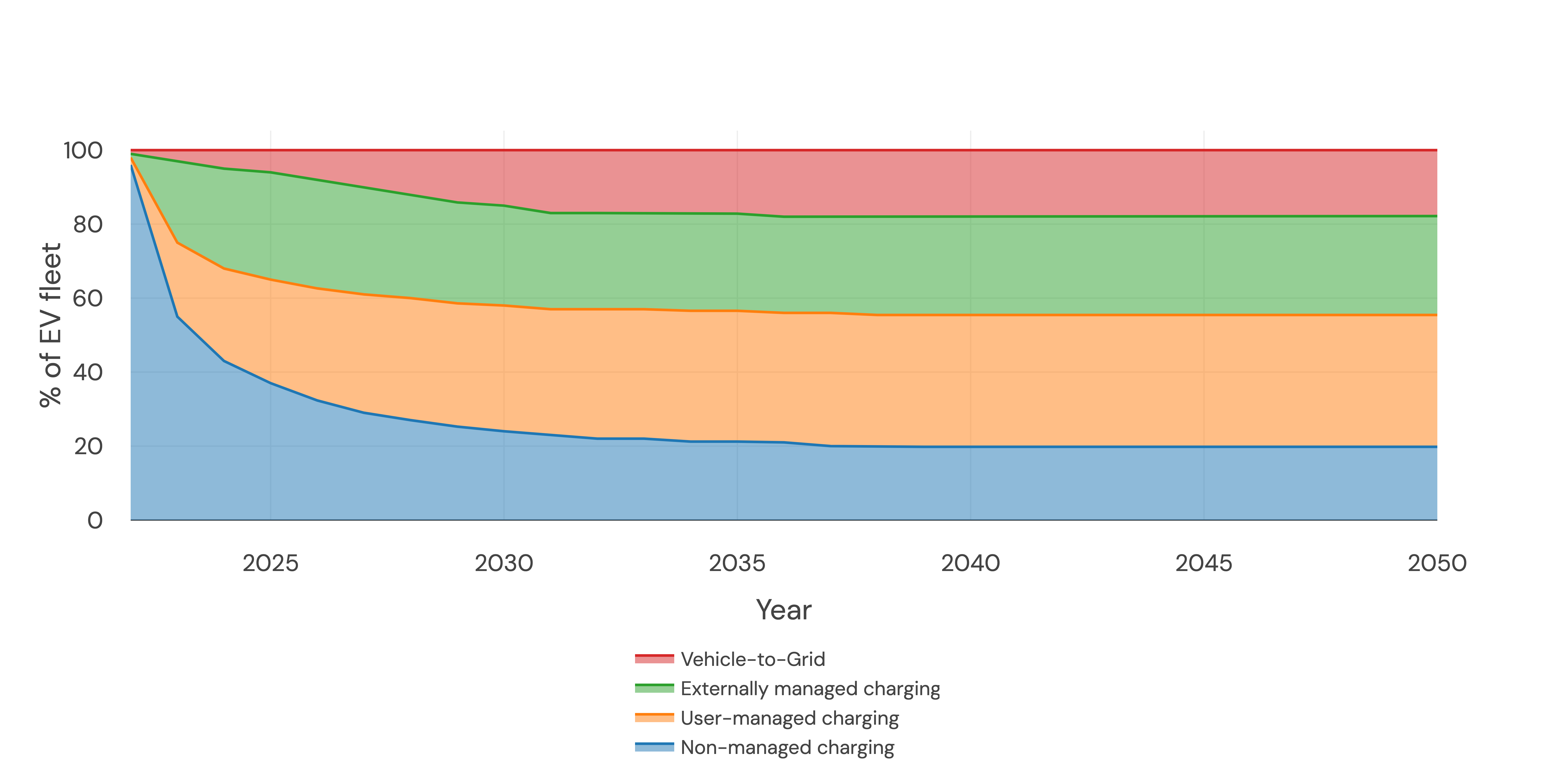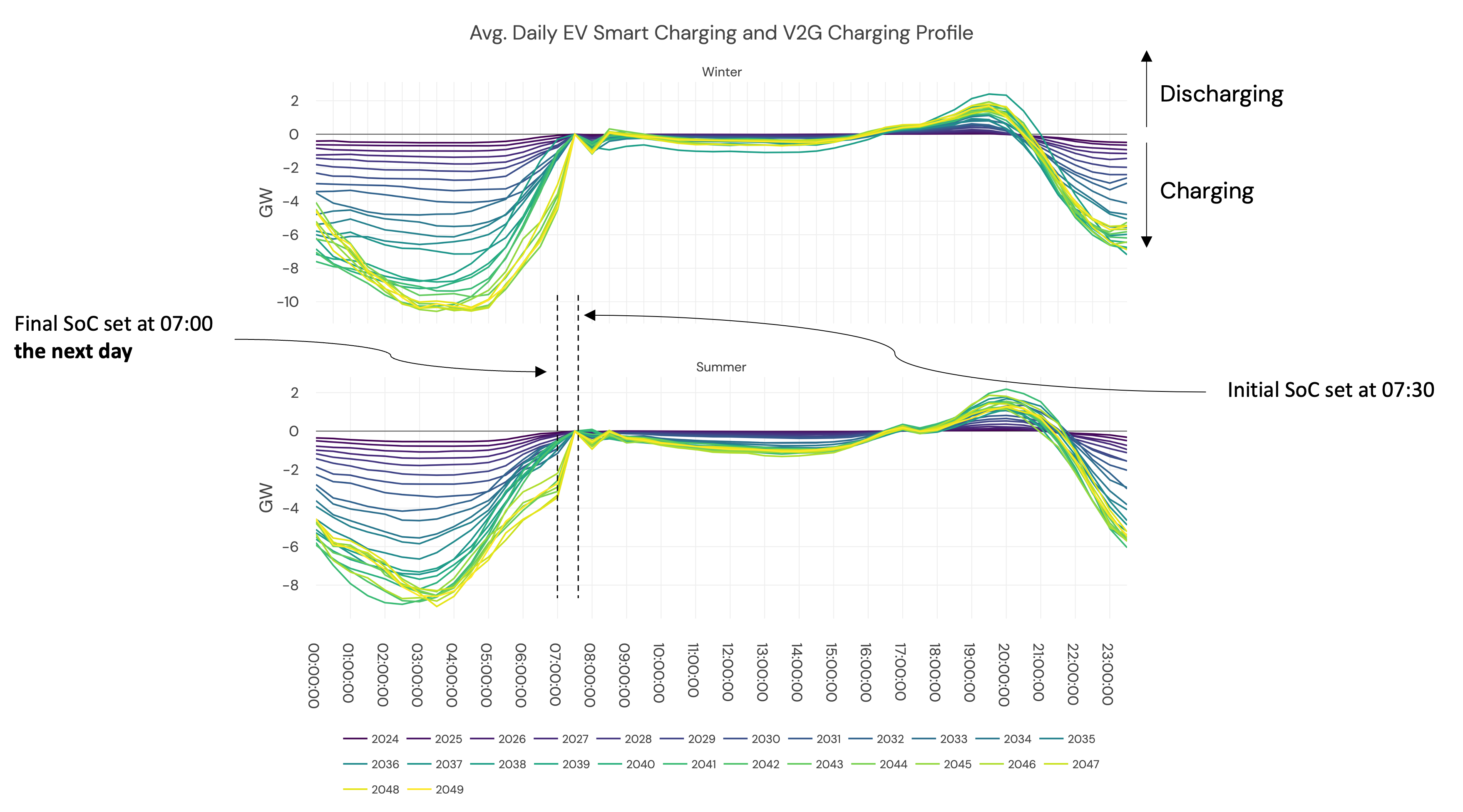Electric Vehicle Demand
EV demand can be broadly grouped into 4 behaviors:
- Unmanaged : Users charge their EVs immediately upon returning home. Increases the evening peak demand.
- User Managed: Users take advantage of simple time-of-use tariffs. Charging occurs mainly between midnight and 5 a.m.
- Externally Managed: Charging is optimized by third-party services to minimize costs (sometimes known as smart charging).
- Vehicle to Grid: Similar to smart charging but includes discharging energy back to the grid.
The proportion of EVs exhibiting each behavior will change over time, trending towards more EVs that are price-responsive (externally managed and vehicle-to-grid).

Modo Forecast, v3.2. Data from UKPN DFES https://dso.ukpowernetworks.co.uk/distribution-future-energy-scenarios
We group these different charging categories into 2, which we model differently. Unmanaged and User Managed form are treated as non-optimised EVs and are not price-responsive. Externally Managed and Vehicle to Grid are treated as optimised EVs, and are price-responsive. We use FES estimates for the number of EVs on the road, reaching 17m by 2035 and 31m by 2050. For optimised EVs we assume a capacity of 70 kWh and a charging power of 4 kW.
Non-optimized EVs charge both in the evening and overnight
Non-optimized EV demand is calculated similarly to heat pump demand. Demand profiles for unmanaged and user managed EVs are summed, scaled to temperature data (when it's colder EV demand increases), and finally scaled to annual FES EV demand forecasts.
The Unmanaged EV demand profile was taken from Element Energy's EV Charging Behaviour Study. The User Managed EV demand profile was based on simple time-of-use tariffs which typically have cheaper prices between midnight and 5 a.m.

Daily demand shape of non-optimised EVs, 2024-2049 (Modo Forecast, v3.2)
Optimized EVs respond to price, flattening overall demand
Optimized EVs are included in our fleet dispatch model (more on this model here). This means they charge (and in the case of V2G, discharge) optimally whilst meeting the demand required to operate each car.
We set several rules when deciding how responsive these EVs can be to price. Each day, they must begin and end at a set state of charge so that they have more than enough stored energy to meet the expected daily energy demand of the car, which varies throughout the year. We also expect fewer cars to be plugged in during the day, so we limit how much the cars can charge between 7 a.m. and 5 p.m. to reflect this.
On average, vehicle-to-grid EVs reduce evening peaks by discharging between 6pm and 9pm, competing with BESS

Modo Forecast, v3.2
Updated 2 months ago